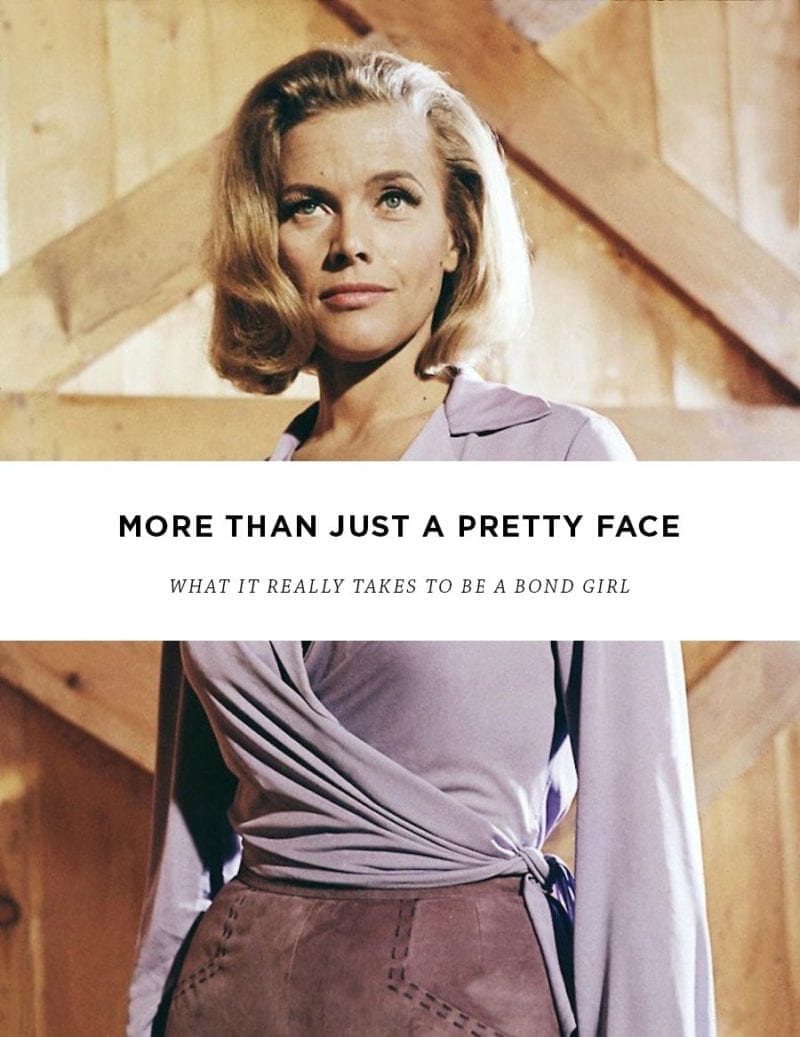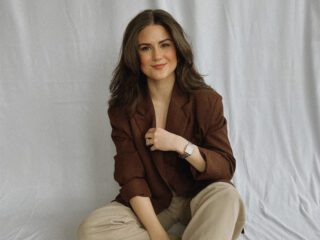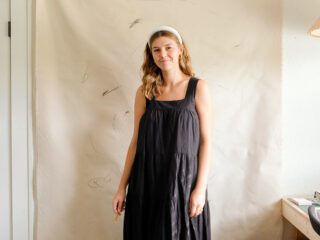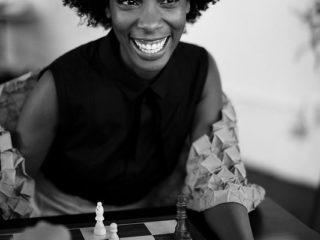Highly qualified, irresistible, whip smart, and a force of nature on screen and on paper. James Bond, you ask? Hardly. We think it’s high time to give the women of the Bond films the long overdue credit that they deserve.
One year prior to Betty Friedan publishing The Feminine Mystique and Congress passing the Equal Pay Act, Ursula Andress slunk out of the Caribbean like Botticelli’s Birth Of Venus and into the public consciousness as the archetypal “Bond Girl” Honey Ryder in the inaugural film Dr. No (1962). In the 50 years of movie franchise and women’s rights history that followed, the Bond Girl remained unrivaled in beauty, confidence and charisma, and in later iterations grew increasingly credentialed.
Undoubtedly Bond has more than his fair share of dalliances with women whose jobs or identities are not explicitly mentioned on camera. However, he also tangles with a corporal in From Russia With Love (1963), a pilot in License To Kill (1989), a space control center programmer in Goldeneye (1995), a nuclear physicist and a chief medical officer in The World Is Not Enough (1999), and a government-employed financial manager in Casino Royale (2006).
Is it mere coincidence that Bond seeks out eminently qualified leading ladies whilst women in real life fight for greater representation and visibility at the top levels of their professions? Perhaps. The films rarely, if ever, allow the to women grow beyond the archetype of the beautiful conquest. In the latest installment, Spectre (2015), Lea Seydoux’s character, the Oxford and Sorbonne-educated psychologist Dr. Madeleine Swann, captivates Bond with her winsome looks and her intelligent charm, but her formidable qualifications are only mentioned in passing and have little to no bearing on the character or the plot.
Let’s take a moment to recognize three of the best minds in the Bond films by charting their path to silver screen immortality.
1. Professor Inga Bergstrom
Film: Tomorrow Never Dies (1997)
Actress: Cecilie Thomsen
Profession: Professor of Danish at Oxford University
The Credentials: Professor Bergstrom is a master of wordplay and uses her proficiency to great effect on 007. Though Danish is not commonly taught at Oxford, Professor Bergstrom would have no doubt single-handedly written the book on it. Currently, Oxford offers a four-year undergraduate degree in Modern Languages (Czech, French, German, Modern Greek, Italian, Polish, Portuguese, Russian, and Spanish), and students can elect to learn additional languages, including Danish, at the university’s Language Centre.
In order to become Professor Bergstrom, Inga would have also had to complete a one- or two-year master’s degree at the Medieval and Modern Languages faculty and a DPhil (the UK equivalent of a Ph.D.) of up to four years culminating in a thesis of approximately 80,000 words. Given that Professor Bergstrom would have invested at minimum 10 years in academia and that her faculty’s website advertises “women’s writing and gender studies” as an “area of particular strength,” she likely has more than a thing or two to teach Bond about the fairer sex!
The Figures: In 2013, Oxford University reported that there were 371 female applicants of a total 573 applicants to the undergraduate Modern Languages course, and 126 female applicants were successful of a total 189 successful applicants.
The Glass Ceiling: Though the film does not specify which college at Oxford University Professor Bergstrom is affiliated with, Bond’s Aston Martin is seen parked in the main entrance of New College, which was founded in 1379. New College only started admitting female undergraduates in 1979, 600 years after it was founded and 51 years after women received the right to vote in the UK in 1928.
2. Dr. Holly Goodhead
Film: Moonraker (1979)
Actress: Lois Chiles
Profession: NASA astronaut
The Credentials: Dr. Goodhead may be a CIA agent undercover as a NASA astronaut, but given that she successfully participates in a shuttle docking, she is definitely qualified for the role.
In addition to maintaining peak physical condition, Dr. Goodhead would have had to achieve a Bachelor’s degree and an advanced degree in engineering, biological science, physical science, or mathematics. Current NASA requirements also involve the completion of at least 1,000 hours pilot-in-command time in jet aircraft and further experience as a flight test pilot.
Upon acceptance by NASA, Dr. Goodhead faced a two-year training and evaluation period in the Astronaut Candidate program which includes the following training: military water survival, parabolic flight, robotics skills, and Russian language. She would have also continued her education in the sciences, in order to conduct research on the International Space Station. Somewhere along the way, she presumably found the time to train in covert operations with the CIA. Who needs time for sleep?
The Figures: In 2013, NASA reported that as of June 2013, 477 men and 57 women (89% and 11%, respectively) have flown in space. The 2013 NASA Astronaut Fact Book reported 50 active NASA astronauts, 12 of which are women.
The Glass Ceiling: Dr. Goodhead follows in the hallowed footsteps of Dr. Sally Ride, the first American woman in space. Dr. Ride earned bachelor’s degrees in both English and physics and a master’s degree and a Ph.D. in astrophysics from Stanford University and applied for NASA when the agency first began recruiting female astronauts in 1977. People Magazine reported on June 20, 1983 that Dr. Ride deflected sexist press conference questions about potential motherhood and crying on the job by retorting, “It may be too bad that our society isn’t further along and that this is such a big deal.”
3. Patricia Fearing
Film: Thunderball (1965)
Actress: Molly Peters
Profession: Nurse
The Credentials: Patricia Fearing might be best remembered for her prowess with mink gloves, but she should really be credited with saving Bond from the potentially life-threatening and career-ending repercussions of untreated alcoholism.
In Thunderball, Bond checks into the detox program at Shrublands Health Clinic, an actual clinic established in 1965 in Suffolk, England, and is assigned to Patricia as a patient. Though the film never mentions where Patricia received her nursing qualifications, it would be safe to assume that Britain’s best secret agent would receive the best medical care.
Edinburgh University, whose nursing degree was ranked top of the UK league tables in 2015, offers a four-year bachelor’s degree in nursing with an option of obtaining an honors degree by preparing a dissertation on, by way of example, various treatment plans for addiction and their effectiveness in the general population. Edinburgh also offers advanced degrees in nursing, and Patricia would have no doubt pursued the highest education available to her, in addition to completing her clinical placements and registering with the Nursing and Midwifery Council.
The Figures: The National Health Service in the UK reported that in 2014, it employed 377, 191 qualified nursing staff. The Royal College of Nursing’s Labour Market Review (2014) reported that around 90% of nurses are female and that in 2013, median annual gross weekly earning for full-time female nurses were £617.80, compared to £652.10 for full-time male nurses. This disparity of 6% is markedly less than the reported 21% disparity between female and male employees in the wider economy, according to the Office of National Statistics.
The Glass Ceiling: Edinburgh University offered the first degree in nursing in a European university in 1956, led by nurse and midwife Elsie Stephenson. Elsie was installed as foundation director of the university’s Nursing Studies Unit without a university degree, having trained as a nurse overseas during World War II with the British Red Cross Society.
Who are your favorite Bond Girls of all time, and why?
Image of actress Honor Blackman in “Goldfinger” via The Telegraph












3 comments
Totally original and informative. When’s the next one?
Very refreshing. Love to read more of similar writings.
Brilliant post! Hope to see more like this!!